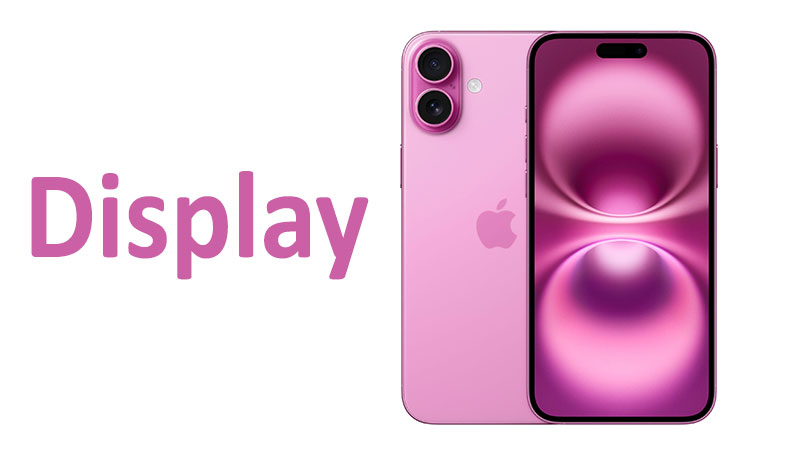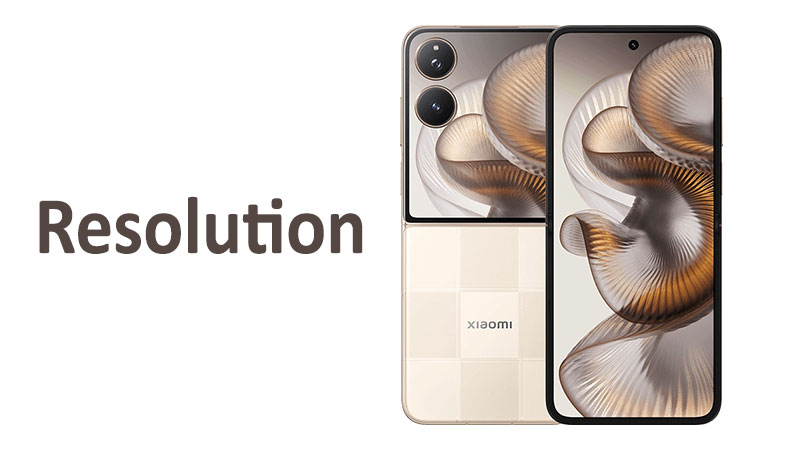The smartphone display is more than just a piece of glass; it is our primary interface with the digital world. It serves as the canvas for our photos and videos, the portal for our social media, and the window for our most critical tasks. A great display delivers vibrant colours, sharp details, and an immersive viewing experience. In a device like the Apple iPhone 16 Plus, the display is not just a feature; it is the core of the user experience.
Apple has a long-standing reputation for setting the standard in display technology. The iPhone 16 Plus continues this tradition, featuring a display designed for both everyday use and high-end media consumption. This article provides a comprehensive look at the Apple iPhone 16 Plus display, exploring its technical specifications, real-world performance, and the key features that make it stand out. Whether you are an avid gamer, a movie enthusiast, or a casual user, understanding this display is crucial to appreciating the full potential of this impressive device.
Detailed Review of the iPhone 16 Plus Display
The Apple iPhone 16 Plus is equipped with a state-of-the-art Super Retina XDR OLED display. This technology offers a significant leap forward in visual quality. It provides deep blacks and brilliant whites, creating a high-contrast viewing experience. The display’s ability to render true-to-life colours is a hallmark of Apple’s engineering.
This large 6.7-inch screen provides an expansive canvas for all content. It makes streaming movies and playing games feel more immersive. The generous size is also ideal for productivity tasks, such as reading documents or multitasking with split-screen applications. This screen size is a major selling point for the Plus model, catering to users who prefer a larger viewing area.
Display Resolution and Clarity
The iPhone 16 Plus display boasts a resolution of 1290 x 2796 pixels. This results in a pixel density of approximately 460 pixels per inch (ppi). This high ppi density ensures that text is razor-sharp and images are incredibly detailed. You won’t see individual pixels with the naked eye. This level of clarity is vital for tasks like editing photos or reading small-font text.
This resolution is consistent with Apple’s “Retina” standard, a term they use for displays where the human eye cannot discern individual pixels from a normal viewing distance. The 19.5:9 aspect ratio is also well-suited for widescreen content. It reduces the black bars that appear when watching films. The sharpness and detail provided by this resolution are top-tier.
Brightness: A New Level of Visibility
One of the most impressive features of the iPhone 16 Plus display is its brightness. It has a typical maximum brightness of 1000 nits. This ensures excellent visibility in most indoor and outdoor conditions. Even under bright sunlight, the screen remains clear and readable.
For HDR content, the brightness can peak at an even higher 2000 nits (HBM – High Brightness Mode). This feature dramatically enhances the visual impact of HDR videos. It makes explosions pop and sunsets glow with incredible realism. The high peak brightness is particularly noticeable when watching movies or playing HDR-enabled games. It adds a new dimension of depth and vibrancy to the content.
This is a significant improvement that directly impacts the user experience. It ensures that the display remains a joy to use in all lighting environments. The ability to go from a low of 1 nit to a high of 2000 nits offers incredible flexibility.
HDR Capabilities: Dolby Vision and HDR10
The display on the iPhone 16 Plus supports both HDR10 and Dolby Vision. This ensures compatibility with a vast library of high-dynamic-range content. Dolby Vision is a particularly powerful format. It uses dynamic metadata to optimise the picture on a scene-by-scene or even frame-by-frame basis. This results in superior colour accuracy and contrast.
The support for these HDR standards means you can enjoy content as the creators intended. Watching a Dolby Vision film on this screen is a cinematic experience. The range of colours and the contrast between the darkest and brightest areas are truly stunning. This feature is a must-have for anyone who consumes a lot of video content on their device.
Display Protection: Ceramic Shield Glass (2024 Gen)
Durability is a key concern for any smartphone. The iPhone 16 Plus is protected by Apple’s latest-generation Ceramic Shield glass. This material is infused with nano-ceramic crystals. This makes it significantly tougher than conventional smartphone glass.
Apple claims the 2024 generation of Ceramic Shield is even more resilient. It is designed to offer a Mohs hardness level of 4. This rating indicates a high level of scratch resistance. While it’s not invincible, it provides a formidable defense against everyday scratches and drops. It’s an essential feature for a large-screen device that is more prone to accidental damage.
This protection gives users peace of mind. While a case is still recommended, the Ceramic Shield provides a strong first line of defense. It’s a key part of the phone’s overall design and durability.
Specialized Comparisons
- iPhone 16 Plus vs. iPhone 15 Plus Display: The iPhone 16 Plus display is largely a refinement of its predecessor. The key specifications, such as the 6.7-inch size, Super Retina XDR OLED type, and resolution, remain the same. The notable difference lies in the improved brightness and the new generation of Ceramic Shield glass. While the iPhone 15 Plus already had a great display, the iPhone 16 Plus offers a slight but meaningful upgrade in brightness and durability. The refresh rate remains at 60Hz on both models, a point of criticism for some.
- iPhone 16 Plus vs. Competitors (e.g., Samsung Galaxy S series): The main area where the iPhone 16 Plus falls behind some high-end Android competitors is its refresh rate. Many flagship Android phones, including the latest Samsung Galaxy models, offer a 120Hz or even a variable refresh rate display. This results in smoother scrolling and a more fluid user experience. While the iPhone’s 60Hz display is still excellent, it lacks the silky-smooth feel of a high-refresh-rate panel. However, the iPhone 16 Plus often surpasses competitors in colour accuracy and brightness consistency.
Pros and Cons of the iPhone 16 Plus Display
Pros:
- Exceptional Brightness: The typical 1000 nits and peak 2000 nits make it incredibly visible in all conditions.
- Stunning Colour and Contrast: The Super Retina XDR OLED technology delivers deep blacks and vibrant, accurate colours.
- High Resolution: The 460 ppi density ensures sharp text and detailed images.
- Strong Durability: The new generation of Ceramic Shield glass provides robust protection against drops and scratches.
- HDR Support: HDR10 and Dolby Vision support offer a truly cinematic viewing experience.
Cons:
- 60Hz Refresh Rate: The lack of a higher refresh rate (like 120Hz) is a notable drawback compared to many Android rivals and the iPhone 16 Pro models.
- No Always-On Display: A feature available on the Pro models is missing, which could be a dealbreaker for some users.
Important Points a Buyer Should Know
- High-Refresh Rate Absence: Be aware that the display operates at 60Hz. If you’ve used a phone with a 120Hz display before, you will notice the difference in scrolling smoothness. If this feature is a priority, consider the iPhone 16 Pro Max or Pro.
- Size Matters: The 6.7-inch screen is fantastic for media consumption but may be too large for users who prefer one-handed use. It is a significant factor in the phone’s overall ergonomics.
- Durability is Enhanced but not Invincible: The Ceramic Shield glass is excellent, but it is not unbreakable. Investing in a screen protector and a good quality case is still a wise decision to protect your investment.
- HDR is a Game-Changer: For anyone who watches a lot of content on Netflix, Disney+, or YouTube, the HDR capabilities of this display are a massive plus. The difference in quality is substantial.
- Dynamic Island: The pill-shaped cutout at the top, known as the Dynamic Island, is a key part of the display. It serves as a dynamic notification and live activity hub. It is a smart and functional way to integrate the front cameras and Face ID sensors.
Conclusion: A Bright, Beautiful, and Durable Display
The Apple iPhone 16 Plus display is a powerhouse of visual technology. It delivers an outstanding viewing experience with its Super Retina XDR OLED panel, high resolution, and exceptional brightness. The inclusion of HDR10 and Dolby Vision support makes it a brilliant choice for media enthusiasts. Furthermore, the latest generation of Ceramic Shield glass provides a new level of durability, offering peace of mind to users.
While the absence of a high refresh rate is a notable omission compared to its Pro siblings and some competitors, it does not detract from the overall quality. For the vast majority of users, the 60Hz refresh rate is perfectly adequate. The iPhone 16 Plus offers a display that is bright, sharp, and vibrant, making it an excellent choice for anyone who values a large, high-quality screen. It’s a display that is not just a part of the phone but the very reason to own it.
FAQ
What is the resolution of the iPhone 16 Plus display?
The resolution is 1290 x 2796 pixels, which results in a pixel density of approximately 460 ppi. This ensures text and images are extremely sharp.
Does the iPhone 16 Plus have a 120Hz refresh rate?
No, the iPhone 16 Plus has a standard 60Hz refresh rate. The 120Hz ProMotion technology is reserved for the iPhone 16 Pro and Pro Max models.
What is the peak brightness of the display?
The display has a typical brightness of 1000 nits and a peak brightness of 2000 nits for HDR content and outdoor use.
Is the display on the iPhone 16 Plus durable?
Yes, it is protected by Apple’s Ceramic Shield glass (2024 gen), which is one of the toughest smartphone glasses on the market.
What is the difference between the iPhone 16 Plus display and the iPhone 15 Plus display?
The core display specifications are similar. However, the iPhone 16 Plus has a slightly improved peak brightness and features the latest generation of Ceramic Shield glass for enhanced durability.



